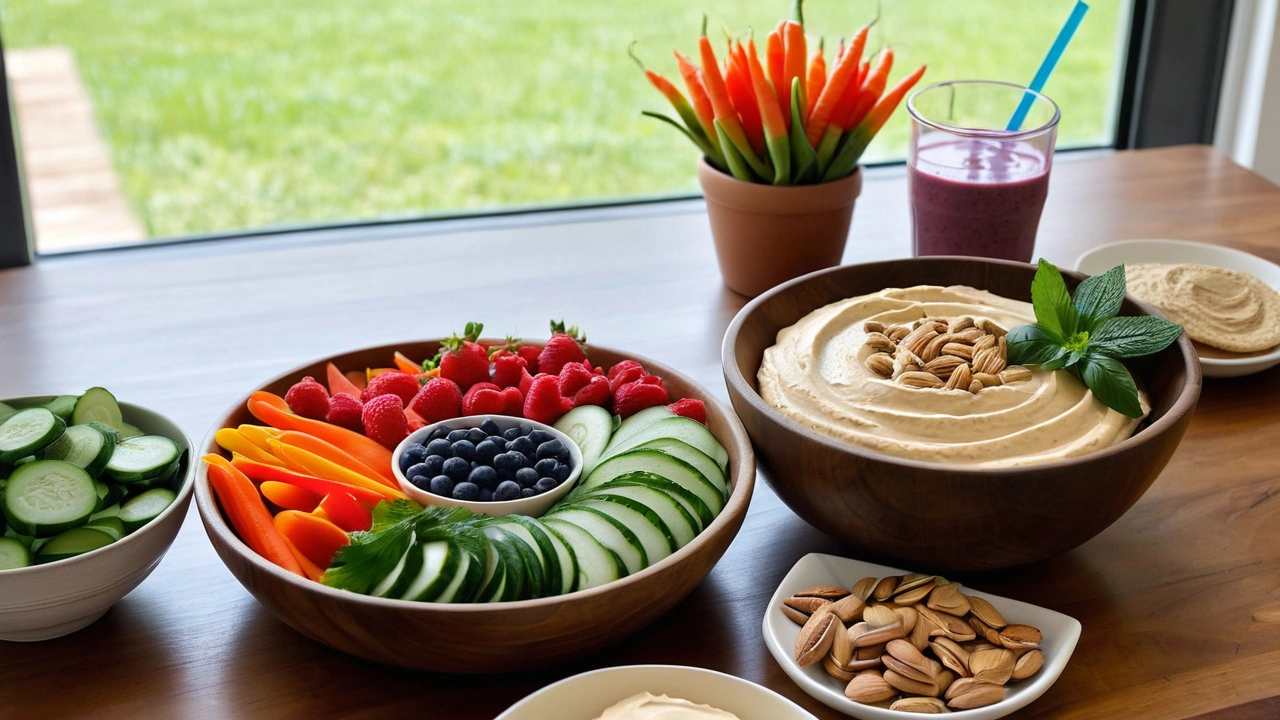Nutritious snacks: smart, tasty fuel between meals
Hungry between meals? A well-chosen snack can stop cravings, keep energy steady, and even help recovery after a workout. The trick is picking snacks that combine protein, fiber, and healthy fat. That combo keeps you full longer and avoids blood sugar spikes.
Quick snack ideas that actually work
Here are easy, real-world options you can grab any day: Greek yogurt with a handful of berries and a sprinkle of nuts; apple or pear slices topped with peanut butter; hummus with carrot sticks or whole-grain crackers; cottage cheese with pineapple or cucumber; a small homemade trail mix made from almonds, pumpkin seeds, and a few dark chocolate chips.
On busy days, pack single-serving items: a boiled egg, a small container of mixed nuts, or a protein bar with minimal added sugar. For post-workout, try a banana with a scoop of almond butter or a homemade smoothie with protein powder, spinach, and frozen berries.
Kid-friendly picks: mini whole-grain pita with cheese, yogurt tubes frozen half-way, sliced bananas with a dab of cocoa powder, or tiny skewers of cheese, grapes, and turkey rolled up. Kids respond well to colorful, bite-sized options that are easy to eat and share.
How to choose and prep snacks
Look at three things: protein, fiber, and fat. Protein from yogurt, cheese, eggs, or nuts helps repair and satisfy. Fiber from fruits, veggies, whole grains slows digestion and steadies energy. Healthy fats—avocado, nuts, seeds—add flavor and fullness.
Portion control matters. Use small containers or pre-portion bags so you don’t mindlessly munch. A good target is 150–300 calories per snack, depending on your activity and hunger. If you’re unsure, aim for a palm-sized protein, a cupped handful of carbs, and a thumb-sized amount of fat.
Prep once, eat all week. Chop veggies, portion nuts, and make a batch of energy bites (dates, oats, nut butter, and a little cocoa). Store yogurt or hummus in single-serve jars for quick grab-and-go options.
Shopping tip: avoid snacks with long ingredient lists full of words you don’t recognize. Choose items where the first few ingredients are whole foods—nuts, oats, chickpeas, fruit.
Want gut-friendly snacks? Pick fermented foods and fiber-rich options: kefir smoothies, plain yogurt with flaxseed, sauerkraut on whole-grain crackers, or a small bowl of oats with banana and cinnamon. These support digestion and steady energy.
Last bit: snack with a purpose. Ask yourself if you’re actually hungry, thirsty, or bored. If it’s thirst, drink water first. If you’re truly hungry, choose something that fills and fuels without a crash.
Use these ideas to make snacking simple and useful. A little planning goes a long way toward feeling better between meals.

Discover Tasty and Nutritious Healthy Snacks for a Better You
Healthy snacks play an essential role in maintaining well-being by providing essential nutrients, satisfying hunger, and preventing overeating at mealtimes. This article explores a variety of tasty and nutritious snack options, debunking the myth that healthy eating means sacrificing flavor. Incorporating these snacks into your daily routine can lead to improved energy levels and overall health.
Read More